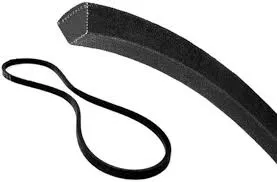- Arabic
- French
- Russian
- Spanish
- Portuguese
- Turkish
- Armenian
- English
- Albanian
- Amharic
- Azerbaijani
- Basque
- Belarusian
- Bengali
- Bosnian
- Bulgarian
- Catalan
- Cebuano
- Corsican
- Croatian
- Czech
- Danish
- Dutch
- Afrikaans
- Esperanto
- Estonian
- Finnish
- Frisian
- Galician
- Georgian
- German
- Greek
- Gujarati
- Haitian Creole
- hausa
- hawaiian
- Hebrew
- Hindi
- Miao
- Hungarian
- Icelandic
- igbo
- Indonesian
- irish
- Italian
- Japanese
- Javanese
- Kannada
- kazakh
- Khmer
- Rwandese
- Korean
- Kurdish
- Kyrgyz
- Lao
- Latin
- Latvian
- Lithuanian
- Luxembourgish
- Macedonian
- Malgashi
- Malay
- Malayalam
- Maltese
- Maori
- Marathi
- Mongolian
- Myanmar
- Nepali
- Norwegian
- Norwegian
- Occitan
- Pashto
- Persian
- Polish
- Punjabi
- Romanian
- Samoan
- Scottish Gaelic
- Serbian
- Sesotho
- Shona
- Sindhi
- Sinhala
- Slovak
- Slovenian
- Somali
- Sundanese
- Swahili
- Swedish
- Tagalog
- Tajik
- Tamil
- Tatar
- Telugu
- Thai
- Turkmen
- Ukrainian
- Urdu
- Uighur
- Uzbek
- Vietnamese
- Welsh
- Bantu
- Yiddish
- Yoruba
- Zulu
Nov . 10, 2024 16:21 Back to list
Understanding the Function and Importance of the Alternator Drive Belt in Vehicles
Understanding the Alternator Drive Belt Key Insights and Maintenance Tips
The alternator drive belt is a crucial component of a vehicle’s engine, playing a significant role in the overall functionality of the electrical system. This belt is responsible for transferring mechanical energy from the engine’s crankshaft to the alternator, which in turn generates electrical energy to power various systems within the vehicle, including the battery, lights, and other electrical accessories. Understanding the alternator drive belt, its importance, and how to maintain it is essential for the longevity and efficiency of your vehicle.
What is the Alternator Drive Belt?
The alternator drive belt, also known as the serpentine belt, is a long, continuous belt that connects the crankshaft to multiple accessories, including the alternator, power steering pump, water pump, and air conditioning compressor. In most modern vehicles, the serpentine belt is designed to provide power to all these components simultaneously, making it an integral part of the engine’s operation.
Importance of the Alternator Drive Belt
The alternator drive belt functions to keep the alternator operational. The alternator is responsible for recharging the vehicle’s battery and supplying power to the electrical systems when the engine is running. A failing or broken drive belt can lead to various issues, such as battery drain, dimming headlights, and malfunctioning electrical components. In some cases, a broken belt can cause significant engine damage, making timely maintenance and replacement essential.
Symptoms of a Failing Alternator Drive Belt
Recognizing the symptoms of a failing alternator drive belt can help prevent more extensive damage to your vehicle. Common signs include
alternator drive belt

1. Squeaking or Chirping Noises A worn or loose belt may produce audible noises, particularly during engine startup or acceleration. 2. Battery Warning Light If the battery light illuminates on your dashboard, it may indicate that the alternator is not receiving enough power due to a faulty belt. 3. Power Steering Issues A failing belt can affect power steering functionality, making it difficult to steer the vehicle. 4. Overheating Since the serpentine belt also powers the water pump, a malfunctioning belt can lead to engine overheating.
Maintenance Tips
1. Regular Inspections Periodically check the alternator drive belt for signs of wear, such as cracks, fraying, or glazing. Pay attention to the tension and alignment as well. 2. Replace as Recommended Consult your vehicle’s owner manual for specific intervals for belt replacement. Many manufacturers recommend replacing the serpentine belt every 60,000 to 100,000 miles, but it’s best to err on the side of caution and replace it sooner if you notice any signs of wear.
3. Professional Assistance If you are unsure about the condition of your alternator drive belt or if you hear unusual noises coming from the engine, consult a mechanic. Professional technicians can accurately assess the belt’s condition and make necessary replacements.
4. Use Quality Replacement Parts When replacing your alternator drive belt, opt for high-quality parts that meet or exceed manufacturer specifications. This ensures optimal performance and longevity.
Conclusion
The alternator drive belt is a vital component of your vehicle’s engine that powers essential electrical systems. Regular maintenance and early detection of issues can significantly extend the life of the belt and prevent costly repairs. By staying proactive and informed about the condition of your alternator drive belt, you can ensure that your vehicle operates efficiently and reliably. Remember, a little attention to this small yet crucial part can go a long way in maintaining your vehicle’s health.
-
Upgrade Power Steering Pump Belt for Smooth, Quiet Operation
NewsAug.27,2025
-
Precision Timing Belt & Chain: Engine Performance & Durability
NewsAug.26,2025
-
Precision Lathe Drive Belts: Durable & Reliable Performance
NewsAug.25,2025
-
84.5 Serpentine Belt: Durable & Precision Fit for Your Engine
NewsAug.24,2025
-
Premium Ribbed Drive Belts for Quiet Power Transmission
NewsAug.23,2025
-
High-Performance Vehicle Timing Belt for Engine Precision
NewsAug.22,2025

